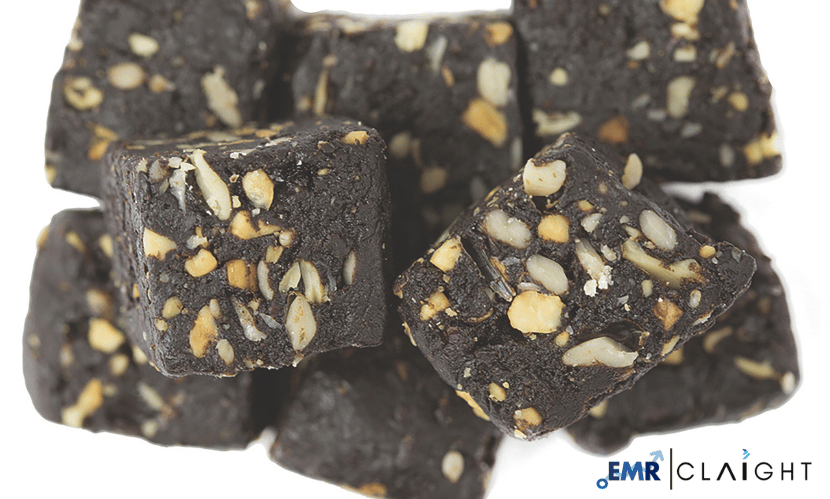
Maca root energy chews are a natural, convenient, and delicious way to boost energy and promote well-being. Infused with maca root, a superfood known for its adaptogenic and energising properties, these chews cater to the growing demand for functional foods. Establishing a maca root energy chews manufacturing plant requires precision in formulation, adherence to quality standards, and a focus on sustainability. This article provides a detailed guide to the production processes, equipment requirements, and essential considerations for setting up a successful manufacturing facility.
Understanding Maca Root Energy Chews
Maca root energy chews are small, chewable supplements made with maca root powder, sweeteners, and other natural ingredients. They are designed to enhance stamina, reduce fatigue, and support overall health. These chews are popular among health-conscious consumers seeking natural energy alternatives.
Get a Free Sample Report with Table of Contents@ https://www.expertmarketresearch.com/prefeasibility-reports/maca-root-energy-chews-manufacturing-plant-project-report/requestsample
Key Processes in Manufacturing
- Raw Material Sourcing and Preparation
- High-quality maca root powder is sourced from trusted suppliers. Additional ingredients such as natural sweeteners, flavours, and binding agents are procured and inspected for quality.
- Ingredient Blending
- The maca root powder is mixed with other ingredients in specific proportions to create a uniform blend. The mixing process ensures consistent flavour, texture, and nutritional content.
- Forming and Shaping
- The blended mixture is shaped into chews using moulding or extrusion machines. This step involves creating uniform sizes and shapes suitable for packaging.
- Drying and Curing
- The chews are dried to achieve the desired texture and shelf stability. Proper drying ensures the product retains its shape and does not become sticky.
- Coating (Optional)
- For added flavour or texture, the chews may be coated with natural sugars, flavours, or functional ingredients.
- Packaging
- The chews are packaged in airtight, resealable containers or pouches to maintain freshness and prevent contamination.
- Labelling and Storage
- Packaged products are labelled with nutritional information, branding, and expiry dates before being stored in a controlled environment.
Essential Equipment for a Manufacturing Plant
Setting up a maca root energy chews manufacturing plant requires specialised equipment for efficient production. Key equipment includes:
- Mixing Machines: For blending maca root powder with other ingredients.
- Moulding or Extrusion Machines: For shaping the chews into uniform sizes and shapes.
- Drying Units: To remove moisture and ensure product stability.
- Coating Machines: For adding flavour or functional coatings to the chews.
- Packaging Machines: For sealing chews in airtight containers or pouches.
- Quality Testing Instruments: For analysing texture, flavour, and nutritional content.
Designing the Plant Layout
An efficient plant layout ensures smooth production flow and compliance with safety and hygiene standards. Key considerations include:
- Raw Material Storage: Secure areas for storing maca root powder, sweeteners, and other ingredients.
- Processing Zones: Dedicated sections for mixing, moulding, drying, and coating.
- Quality Control Laboratory: Equipped for testing raw materials and finished products.
- Packaging and Labelling Areas: Automated systems for sealing and branding products.
- Storage Facilities: For maintaining optimal conditions to preserve product freshness.
Quality Control in Manufacturing
Ensuring consistent quality is critical in maca root energy chews production. Key quality control practices include:
- Raw Material Testing: Verifying the purity and nutritional content of maca root powder and other ingredients.
- Process Monitoring: Ensuring proper mixing, shaping, and drying techniques for uniform quality.
- Product Testing: Evaluating the texture, flavour, and shelf stability of the chews.
- Packaging Inspection: Ensuring airtight seals and accurate labelling on all packages.
Regulatory and Licensing Requirements
Setting up a maca root energy chews manufacturing plant involves adhering to food safety and industry regulations. Key requirements include:
- Food Safety Certifications: Compliance with HACCP, ISO 22000, or similar standards.
- Labelling Compliance: Providing accurate nutritional information and expiry dates.
- Environmental Clearances: Managing waste and emissions responsibly.
- Workplace Safety Regulations: Ensuring safe handling of equipment and ingredients.
Applications of Maca Root Energy Chews
Maca root energy chews are versatile products with applications across various markets:
- Health and Wellness: Popular among fitness enthusiasts and individuals seeking natural energy boosters.
- Retail: Sold in supermarkets, health food stores, and pharmacies.
- E-Commerce: Widely available on online platforms catering to health-conscious consumers.
- Gifting and Travel: Packaged as convenient, portable snacks or supplements for on-the-go lifestyles.
Sustainability in Manufacturing
Sustainability is a critical aspect of maca root energy chews production. Key measures include:
- Eco-Friendly Sourcing: Partnering with suppliers who follow sustainable farming practices for maca root.
- Minimal Packaging: Using recyclable or biodegradable materials for product packaging.
- Energy Efficiency: Implementing energy-saving technologies in drying and production processes.
- Waste Management: Recycling production waste and minimising environmental impact.
Market Trends and Opportunities
The market for maca root energy chews is growing due to increasing consumer demand for functional and natural health products. Key trends include:
- Rising Health Consciousness: Consumers are actively seeking natural, nutrient-rich snacks that provide energy and wellness benefits.
- Innovation in Flavours: Development of unique flavour combinations to cater to diverse taste preferences.
- E-Commerce Growth: Increased sales through online platforms due to the convenience and accessibility of health products.
- Focus on Sustainability: Growing consumer preference for eco-friendly products and packaging.
Challenges in the industry include:
- Raw Material Costs: Managing fluctuations in the price and availability of high-quality maca root powder.
- Market Competition: Standing out in a competitive market with innovative and high-quality products.
- Regulatory Compliance: Meeting stringent food safety and labelling standards.
By adopting advanced manufacturing techniques, ensuring stringent quality control, and focusing on sustainability, manufacturers can establish a successful maca root energy chews production facility to meet the growing global demand for functional health foods.





Leave a Reply